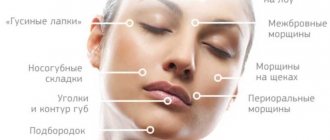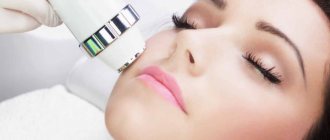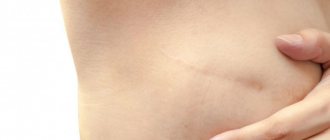The healing effects of cold on the human body were noted by our ancestors. To strengthen the body, they hardened themselves in all available ways - swimming in an ice hole, wiping with snow, washing with ice water. Later, the effectiveness of the method received scientific justification - short-term exposure to cold stimulates protection and recovery mechanisms. As a result, the immune system is strengthened, and all organs and systems begin active regeneration.
In modern medicine and cosmetology, a procedure such as cryotherapy is in demand. Its main goal is to preserve youth and improve health.
Types of cryotherapy
There are several types of cryotherapy - local, private, general or cryomassage. Each type has its own indications, features and advantages. The unifying characteristic is the healing effect of cold on the body. Regularity is required to achieve the desired effect.
Content:
- Types of cryotherapy
- Benefits of cryotherapy
- Indications for cryotherapy
- Contraindications and restrictions
- Preparation for the procedure
- Possible side effects
General cryotherapy is a procedure during which a person is placed in a special chamber where liquid nitrogen is sprayed at a temperature of about -150 C. Due to the short duration, not the entire body is cooled, but only the upper layers of the epidermis. To increase the effectiveness of therapy, contrast is used - first the skin is warmed up and then sharply cooled.
Local cryotherapy is the effect of negative temperatures on problem areas of the skin. In this way, you can get rid of small skin growths and tumors, suppress inflammatory processes or speed up the process of restoration of epidermal cells.
Private cryotherapy is a treatment procedure that can be performed at home without the supervision of a specialist. Simply put, these are baths and ice packs that relieve pain, swelling, and fatigue. It is important to know that simply rubbing the skin with an ice cube prevents early aging and protects against the appearance of deep wrinkles.
Cryomassage is the effect of cold on the facial skin. Most often, this is necessary to relieve irritation after cosmetic procedures such as peeling or plastic surgery. The essence of the method is that a specialist cools a special wooden spatula with a cotton tip in liquid nitrogen (temperature - minus 190 C), with which he massages the skin of the face and neck with special movements. Before your first cryotherapy session, you must visit your doctor and make sure there are no contraindications.
Treatment results
When analyzing the immediate results of treating malignant tumors using the cryogenic method, it becomes obvious that the best results were obtained with basal cell carcinoma, cancer of the skin and lower lip, the worst - with malignant tumors of the mucous membrane of the oral cavity (Table 44).
Table 44. Immediate results of cryogenic treatment of locally advanced malignant tumors of the head and neck
A study of long-term results of treatment with the cryogenic method showed that the most favorable results were obtained for basal cell carcinomas and skin cancer (Table 45). The therapeutic effect of cryogenic exposure for various neoplasms of the scalp and neck is clearly illustrated by the following clinical examples.
Table 45. Long-term results of treatment of patients with basal cell carcinomas, skin cancer, malignant tumors of the lower lip and oral mucosa who underwent cryodestruction
Clinical example
Patient L., 81 years old, was in the department of head and neck tumors of the Oncology Research Institute from November 22 to December 16, 1980 due to a relapse of locally destructive basal cell carcinoma of the parietal region (disease progression), as well as primary multiple cancer of the left parietal region, T2N0M0).
On April 20, 1972, a wide excision of the affected area of skin was performed with plastic surgery using a free skin flap taken from the inner surface of the right shoulder. The result of a histological examination of postoperative specimen No. 150033 is a destructive basal cell carcinoma that grows throughout the entire skin.
Five years later, in February 1977, an ulcerative surface appeared in the center of the transplanted flap with minor pain in this area. The result of histological examination No. 128587 is intermediate tissue in the preparation. Conservative therapy with methyluracil ointment was prescribed, with improvement. In May 1980, an ulcer appeared again in the parietal region, which quickly began to increase in size. Upon admission to the clinic, the patient had a tumor ulcer in the parietal region in the center of the transplanted flap with undermined edges, which bled easily when touched, and in some places the cortical layer of bone measuring 10x8 cm was exposed. Histology No. 16371 - basal cell carcinoma.
During the examination, it was discovered that the patient suffered from stage III hypertension and diabetes mellitus, for which he received appropriate treatment for 15 days. On February 3, 1980, he underwent cryodestruction of a malignant skin tumor in the parietal region five times with an exposure of 5 minutes each session. After rejection of the necrotic masses, the patient was discharged. At home, he continued to treat the wound surface with Vishnevsky ointment. Currently healthy, with no signs of relapse. The observation period is 6 years.
Clinical example
Patient D., 77 years old, was in the department of head and neck tumors of the Oncology Research Institute from September 12 to September 28, 1980 for locally advanced basal cell carcinoma of the outer corner of the left eye, stage IIIa, T3N0M0, spreading to the temporal and zygomatic regions. She has been ill for 5 years when a tumor formation appeared on the skin of the outer corner of the left eye, slowly increasing in size. I didn’t go to the doctors. He treated himself with lapis cauterization, but without effect. Upon admission to the clinic, a large exophytic tumor with decay in the center was discovered on the skin of the outer corner of the left eye, spreading to the skin of the outer corner of the left eye, temporal and zygomatic areas with infiltration of the upper and lower eyelids. Dimensions 7x6 cm. Histologically, No. 28640 is a solid basal cell carcinoma. Radiologically the bone is intact. Suffers from epilepsy. A scar on the skin of the face after injury during attacks. On September 19, 1980, the patient underwent cryodestruction of the tumor by spraying three times with a 5-minute exposure for each session. On the 7th day necrotomy was performed. After this, he continued to treat the wound surface with ointment dressings. Discharged in satisfactory condition. Currently healthy. There are no signs of relapse. The observation period is 4.5 years. The eyeball and eyelid are preserved.
Clinical example
Patient Ts., 61 years old, was in the department of head and neck tumors of the Oncology Research Institute from May 24 to December 5, 1979 for locally advanced skin cancer of the left cheek, stage IIIb, T3N0N0, with spread to the soft tissues of the upper and lower lips with invasion of all tissues and into the oral cavity.
He has been ill for 1.5 years, when for the first time a tumor-like formation appeared on the skin of the left cheek, which slowly increased in size. I treated myself with various ointments, but without effect. Upon admission to the clinic, locally: a large exophytic tumor with undermined edges was found on the skin of the left cheek, rising above the level of the skin with decay in the center, occupying the skin of the left cheek, upper and lower lip, destroying all soft tissues with germination into the oral cavity. The tumor dimensions are 7x8 cm.
In the submandibular region on the left, enlarged lymph nodes are identified, dense, limitedly mobile, the skin above them does not fold, measuring from 3 to 5 cm in diameter. Histology of the primary tumor No. 10891/79 is keratinizing squamous cell carcinoma.
Cytological examination of enlarged lymph nodes No. 155688 - the cytogram is characteristic of squamous cell carcinoma. In addition, during the examination, the patient was diagnosed with coronary heart disease and cardiosclerotic atherosclerosis, for which he received appropriate treatment for 10 days.
On June 6, 1979, the patient underwent cryogenic treatment of the primary tumor by cryoirrigation five times with an exposure of 10 minutes. 2 weeks after cripodestruction, a demarcation line was marked and necrotomy was performed. After the inflammatory reactions subsided, the patient underwent fascial-sheath excision of the tissue of the neck on the left on November 20, 1979.
The result of histological examination No. 11292/79 - in two lymph nodes there are metastases of squamous cell keratinizing cancer, in the rest there is hyperplasia of lymphoid tissue. Currently the patient is healthy. There are no signs of relapse or metastases. There is a defect in the soft tissues of the left cheek and left corner of the mouth. He categorically refused plastic surgery.
Despite the positive results of treating malignant tumors of the skin of the head and neck using the cryogenic method, we observed local relapses in 20 patients (Table 46), which is 9.7%. In 9 cases, relapses occurred with locally destructive basal cell carcinomas, and in 11 cases with squamous cell carcinoma.
Table 46. Relapses and metastases after cryogenic treatment of locally advanced malignant tumors of the skin of the head and neck, lower lip and mucous membrane of the oral cavity
It should be noted that after cryogenic treatment, 12 patients developed radioresistant basal cell carcinomas and skin cancer. In 8 cases, the processes were very widespread with destruction of the tissues of the nose (3) and ethmoidal labyrinth (1) and destruction of nearby bone bases.
Quite good long-term results were observed with cryogenic treatment of locally advanced cancer of the lower lip. Five-year survival rate is 45.8%. For clarity, we present two extracts from the medical history.
Clinical example
Patient P., 56 children, was admitted to the Department of Head and Neck Tumors of the Oncology Research Institute from February 16 to May 25, 1980 for cancer of the lower lip, stage IIIa.
He has been ill since November 1979, when, after an injury (chopping wood), a crack appeared on the red border of the lower lip, bleeding for a long time. Then a compaction was discovered, and after a while - an ulcer, which slowly began to increase in size. He was treated with indifferent ointments on his own, without effect. Upon admission to the clinic, the patient had 3/4 of the red border of the lower lip occupied by a tumor ulcer, dense, with undermined edges and involvement of soft tissues, the skin of the lower lip on the left and the corner of the mouth.
The dimensions of the tumor are 5x6 cm. There are no enlarged lymph nodes in the neck. Histologically, tumor ulcer No. 4059/80 shows squamous cell keratinizing carcinoma. In addition, the patient suffers from emphysema and diabetes. On February 26, 1980, cryotherapy was performed on the tumor of the lower lip using contact and cryospray methods three times with an exposure of 10-15 minutes.
After healing of the wound and rejection of the tumor on the lower lip, the patient underwent an upper fascial-sheath excision of the tissue of the neck on both sides using the combined method on April 23, 1980. In the postoperative period, marginal necrosis of the skin flaps was observed. As a result of histological examination No. 11483/38, the removed tissue did not reveal metastases in the lymph nodes. Currently healthy.
Clinical example
Patient V., 77 years old, was in the department of head and neck tumors of the Oncology Research Institute from January 10 to March 4, 1980 for locally advanced cancer of the lower lip, stage lVa, T4N1M0.
He has been ill for three years, when for the first time a tumor ulcer appeared in the area of the red border of the lower lip, slowly increasing in size. She treated herself with indifferent ointments, but to no avail. And only when the tumor covered the entire lower lip did she seek medical help. Upon admission to the clinic, there was a huge exophytic tuberous tumor covering the entire lower lip with infiltration of the soft tissues of both corners of the mouth and chin area.
No enlarged lymph nodes were found in the submandibular region on both sides. Histology No. 242061 - squamous cell keratinizing carcinoma.
During the examination, the patient was found to have cardiovascular insufficiency in the decompensation stage (swelling of the lower extremities, shortness of breath even with light physical exertion); she received preoperative preparation for this within 15 days. On January 28, 1980, the patient underwent cryodestruction of a widespread tumor of the lower lip using the cryospray method using protective rings three times with an exposure of 15 minutes each session with natural freezing of the tumor.
The patient underwent treatment without complications. On the 3rd day after cryodestruction, a clear demarcation line was noted. Necrotomy was performed. After healing of the wound on the lower lip for prophylactic purposes, on November 21, 1960, the patient underwent upper fascial-sheath excision of the tissue of the neck on both sides.
The result of a histological examination of the removed tissue No. 245473 - and one lymph node has metastases of keratinizing squamous cell carcinoma. D The patient is currently healthy, without signs of relapse or metastases.
Particularly difficult, in our opinion, is the treatment of a group of patients with the spread of a cancerous tumor to the corner of the mouth, cheek with damage to the alveolar process of the lower jaw. Thus, out of 113 treated patients, 15 (13.2%) had relapses of the tumor process.
It should also be noted that of these 15 patients, 7 had radioresistant forms of cancer localized in the corners of the mouth, and in 2 tumors, in addition to the lower lip, spread to the soft tissues of the cheek. In 6 patients, the tumor affected the alveolar edge of the lower jaw with destruction of the cortical layer, which was proven by X-ray examination.
When treating 11 patients with locally advanced malignant tumors of the oral mucosa using the cryogenic method, only one patient lived 5 years after cryotherapy for tongue cancer with spread to the root, which arose against the background of lichen planus. Another patient was observed for more than 3 years after cryotherapy of a common cylindroma of the hard palate mucosa. We present a clinical observation.
Clinical example
Patient S., 44 years old, was in the department of head and neck tumors of the Oncology Research Institute from December 22, 1978 to January 27, 1979 for locally advanced cylindroma of the mucous membrane of the hard palate.
She has been ill for a year, when a tumor-like formation appeared on the mucous membrane of the hard palate, slowly increasing in size, and pain appeared in this area, intensifying especially at night. Mobility of teeth was detected.
Upon admission to the clinic, the patient had a huge exophytic tumor that occupied the entire mucous membrane of the hard palate, as well as the alveolar edge of the upper jaw on both sides, with the exception of the central incisors. In the center there is a tumor with decay. On palpation - dense, slightly painful. Mobility of 4321/1234 teeth is noted.
X-ray about the bone structure of the hard palate. Taking into account the spread of the process, on February 10, 1979, the patient underwent cryodestruction of the tumor using the contact method three times with an exposure of 10 minutes. She underwent treatment without complications; On the 12th day after destruction, necrotomy was performed. Wound healing by secondary intention. Currently healthy. Uses an ectoprosthesis.
The remaining patients died from the spread of the process in the first two years after treatment. Local relapses were observed in 5 people in the first year after treatment. All of them had a malignant tumor affecting the alveolar edge of the lower jaw. In 11 observations we did not make a final conclusion.
In addition to the local relapses that we have already mentioned, in 18 patients, after cryodestruction of the primary lesion, metastases developed in the cervical regional lymph nodes, mainly in the first year after treatment. An operation such as fascial-sheath excision of the neck tissue was performed in 14 patients, and in 4 patients a Crail operation was performed.
In the first year after treatment, 12 patients died from disease progression (destroying basal cell carcinoma - 2, skin - 2, cancer of the lower lip - 5, cancer of the oral mucosa - 3). All tumors involved 2 or more organs and bone structures. 29 patients died from other concomitant diseases (16 from heart failure, 6 from liver cirrhosis, 2 from a car accident, 3 from myocardial infarction, 2 from cerebral hemorrhage). It should be noted that after cryodestruction, no relapse was observed in any case.
Benefits of cryotherapy
Cryotherapy has a pronounced tonic, rejuvenating and restorative effect. The procedure itself is absolutely painless and does not bring discomfort to the person. Due to the impact of negative procedures, the active production of the pleasure hormone begins - as a result, after the session, not only good health, but also an excellent mood.
In modern cosmetology, cryotherapy is one of the fastest-acting ways to combat many skin problems - premature aging, dullness, dehydration, sagging, dermatological diseases. The main condition for the effectiveness of cold therapy is the selection of the correct treatment method and the use of specialized equipment.
Indications for cryotherapy
The list of indications for the use of cryotherapy is quite extensive. It includes both dermatological and medical ailments. Most often, cryotherapy is indicated for:
- chronic skin diseases, including psoriasis and dermatitis of various etiologies;
- excess body weight, pronounced cellulite;
- neoplasms on the skin;
- dehydration of the epidermis, premature aging;
- chronic stress;
- diseases of the respiratory system;
- some diseases of the female reproductive system, including infertility.
This is not a complete list of reasons to resort to cold treatment. Some people visit the cryochamber solely to maintain their tone and boost their energy levels.
Contraindications and restrictions
Cold can have not only a positive effect on the body, but also a detrimental one. Therefore, it is important to undergo a medical examination and consult with a qualified specialist before starting therapy. Cryotherapy is not recommended for people who have increased skin sensitivity to low temperatures.
Cold dermatitis is one of the direct contraindications. You should not go for the procedure if you have an elevated body temperature or an exacerbation of chronic ailments - this may cause the disease to worsen.
Another contraindication is systemic blood diseases and mental disorders.
General cryotherapy involves placing the patient in a special capsule. It is better for people suffering from claustrophobia to refrain from such activities in order to prevent the development of a panic attack. In case of instability of the psycho-emotional state during the treatment period, it is recommended to take sedative medications.
Actionable results
Cryotherapy always gives obvious effects:
- General rejuvenation and face lifting.
- Restoring complexion, elasticity and firmness.
- Removing swelling and vascular network.
- Recovery after acne.
- Acceleration of rehabilitation after peelings, plastic surgery and laser resurfacing.
- Maintaining and prolonging the effect of a youthful face.
- Acceleration of waste removal processes.
- Significant enhancement of enzymatic processes.
- Providing immunomodulatory effects.
The skin of the face whitens, its pores narrow, and the skin glands begin to function normally. To achieve such results, make an appointment and be sure to consult with a cosmetologist.
Cryotherapy enhances the effectiveness of most cosmetic procedures. To enhance and consolidate success, it is carried out after mesotherapy and biorevitalization, in preparation for plastic surgery, and as rehabilitation after aggressive procedures.
Preparation for the procedure
Preparation for cryotherapy begins with a visit to a therapist, who will issue a referral for an ECG. Additionally, you need to take a blood and urine test. If, based on the results of the examination, the doctor allows cold treatment, you can safely sign up for the procedure.
Despite the painlessness and absence of discomfort directly during exposure to low temperatures, it is not superfluous to pre-harden the body. For example, a week before the start of therapy, you can take a contrast shower - thanks to this, restorative and protective processes will already be launched in the skin, and the complex will be more effective.
Best materials of the month
- Why you can't go on a diet on your own
- 21 tips on how to avoid buying stale food
- How to keep vegetables and fruits fresh: simple tricks
- How to curb your sweet cravings: 7 unexpected products
- Scientists say youth can be extended
During general cryotherapy, the patient is placed in a special chamber, so the most sensitive areas of the body - the head, hands and feet - need to be protected from low temperatures. Experts recommend taking a warm hat, mittens and shoes with you to the procedure.
The duration of the procedure is about 5 minutes. To achieve the desired effect, it is recommended to undergo a set of procedures - from 5 to 15 times. The break between sessions is determined by a specialist based on individual indicators. After the procedure itself, the skin does not require special care. There are also no restrictions regarding exposure to ultraviolet radiation or the use of decorative cosmetics.
Possible side effects
If safety rules are violated or the session time is increased, dermatitis or frostbite of some areas of the skin may develop. If such reactions are detected, the patient must inform the specialist who performed the procedure about them and refuse cryotherapy until the skin is completely restored.
The body must be completely dry during the general cryotherapy procedure - moisture attracts liquid nitrogen, and its particles adhere firmly to the surface of the skin. Therefore, during the session, special attention is paid to protecting the face.
More fresh and relevant information about health on our Telegram channel. Subscribe: https://t.me/foodandhealthru
We will be grateful if you use the buttons:
Features of cryotherapy
Cryotherapy is carried out after examining the patient and receiving the results of a standard examination. The procedure takes place in several stages:
- facial skin cleansing;
- the use of anesthetics and other cosmetics, depending on the purpose of using liquid nitrogen;
- treating the skin with special attachments, with which the cosmetologist applies liquid nitrogen and carries out a cold therapy procedure;
- use of sedatives and regulating agents.
After the procedure, you can go home almost immediately if there are no complaints about your health. It is necessary to carefully monitor the condition of the skin. If any complications occur, you should contact your doctor as soon as possible. Following all the specialist’s recommendations allows you to minimize any risks of secondary infection and other adverse health consequences.











